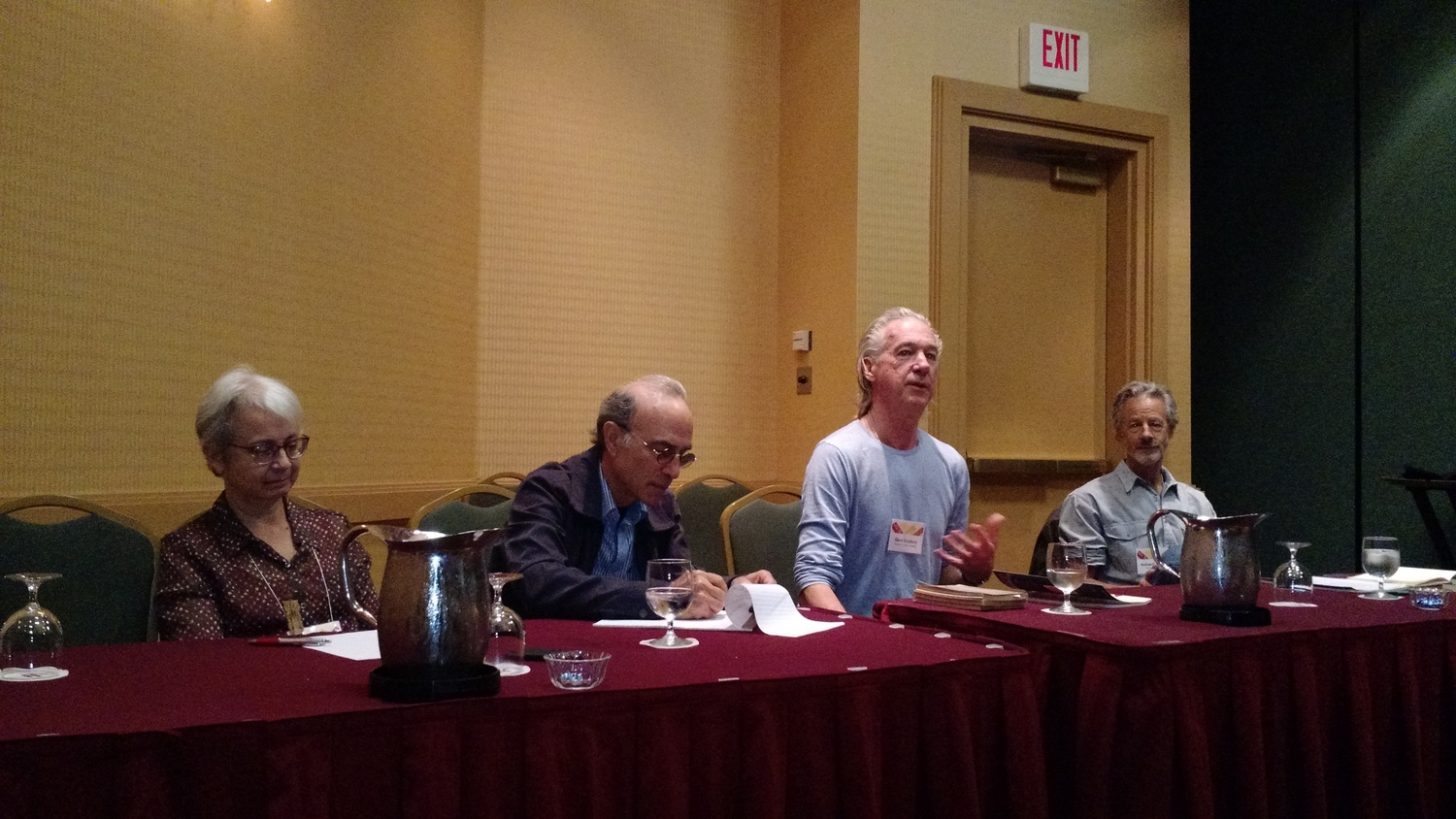Here's my most recent book translation!
Read moreWhen 3% Felt Like 30: A Roundtable On Literary Translation In The 60s & 70s
During the 38th Annual Conference organized October 28-31, 2015 by the American Literary Translators Association (ALTA) in Tucson, Arizona I attended a panel titled “When 3% Felt Like 30: a Roundtable on Literary Translation in the ‘60s and ‘70s,” which was moderated by Steve Bradbury with panelists Stephen Kessler, Andrew Schelling, and Marian Schwartz.
Having started working as translators in the 1960s and 1970s, each one of them reminisced about how they first discovered literature not written in English and how, back in the day, it seemed that there was more translated literature entering the U.S. market than there is today. The title of their panel is a reference to the fact that, in average, 3% of all books published every year in the United States are works in translation, as indicated by Three Percent, a resource for international literature at the University of Rochester.
Steve Bradbury, a translator of Chinese poetry and editor of Full Tilt: A Journal of East-Asian Poetry, Translation, and the Arts, introduced the panel and started out by talking about his own experiences as a teenager in the sixties. “I remember it vividly. It was like I had put my finger in a socket and was electrified,” he recalled finding a shelf of foreign books at a local bookstore.
Spanish-to-English translator and poet Stephen Kessler said he was an A student of Spanish in high school and remembers discovering the works of Federico García Lorca and Pablo Neruda, the main Spanish-languages poets at the time. “You usually needed to go to Spain or Mexico to find material in Spanish,” he said, explaining these titles were hard to come by.
Andrew Schelling, poet and translator from Sanskrit to English, talked about the political context of the era. “Finishing high school in 1970, the main event was the Vietnam War,” he said, mentioning that reading foreign books was a way to resist the U.S. socio-political climate at the time. “That was part of that energy: finding these books, the search for alternative values, foreign literatures.” He said he decided to learn Sanskrit, mentioning the popularity of the “Beatles and bedspreads” counter-culture. “Popular culture kept India alive in our imagination,” he added.
When it was Marian Schwartz’s turn to talk, she said she found her presence in the panel a little contradictory. As a translator of Russian classic and contemporary fiction, history, and biography, she reminded the attendees that the USSR wasn’t very popular back then due to the Cold War with the United States. “If anyone read a Soviet novel, they’d be discredited,” she emphasized, saying that back in the sixties she was learning Russian in Harvard as a dead language. “There weren’t many Westerners going to Russia. Professors were not fluent in Russian because there wasn’t much contact.”
The panel was then asked about how exactly they started out as translators after falling in love with foreign cultures and literature. Stephen said he felt awkward at first when reading poems and comparing Spanish originals and English translations side by side, admitting he was young and impressionable. “I know grammar. I can read. I can speak Spanish when I travel... What’s wrong with me? When I read these poems, I get something completely different!” he recalled. “Everyone was just winging it, so that was how I got into translation: I was looking at the material available then and didn’t think they were that good. I thought I could give it a shot.” He said translating also made him a better poet.
Andrew added that being a translator wasn’t a full-time activity back then and many wondered, “If you want to be a translator, what are you going to do for your day job?” Marian agreed, saying that she was still freelance-editing to pay her bills and couldn’t live on translation work alone.
She told attendees that she started working in the seventies, when students of Soviet culture and literature were discovering the Silver Age of Russian Poetry from the 19th and early 20th centuries. “Established U.S. poets were bringing Russian poets to the American audience through translation,” she recalled.
On the more practical side of things, Marian said publishing houses were more artistic back then. “If someone had an MBA, they’d be laughed at,” she joked. Soon after that, the corporate mentality started to take over and publishers were being bought and merged. “That’s when the number of literary translations dropped,” she contrasted.
She also mentioned the underground feeling of literary translation dissemination at that time, and remembers typing five copies of translated material in onion-skin paper, keeping a copy to herself, and passing the rest on to four friends, so they would do the same and carry on the tradition.
Stephen agreed with the improvised character of translations back in those days. “Our group had a fly-by-night operation. We’d put a circle around a C for copyright. We didn’t even have ISBNs. We just wanted to publish and I was semi-visible for a few seconds.”
The panel discussed the relationship between translators and publishers at more length. “New Directions, by then, was an endorsement of high-quality work,” Steve emphasized. “A third of their titles were translations. And we didn’t care they were translations; we just wanted to read good material. We wanted to read books that would change our lives.”
Marian mentioned New Directions as well. “I didn’t have copyright back then, but they wanted to publish my translations when they took over, and they wanted me to have copyright of my translations.”
When talking about what changed since then and, considering the lack of official numbers, whether they believe that the “electrifying feeling” may give us a false notion that more translations were being produced in the sixties and seventies compared to now, they admitted that they may see the past through rosy goggles.
“We weren’t just reading literary translations; we were reading the same literary translations and talking about it with passion,” Steve chimed in. “There are a lot more translations being published today, but who’s reading them? The real problem for us isn’t to have books published; but having books read,” he added.
“Maybe we think of it as a golden age because we were young,” Stephen admitted. “Back then, the U.S. felt like a broad culture, instead of the specialized culture of nowadays. That’s what we’re nostalgic about it: it was easier to find those books that would change our lives.”
“We also don’t have bookstores as a meeting place anymore, where people discovered things together,” Marian explained. “There’s money out there for something that is potentially exciting,” Steve added, on a positive note, mentioning the digital culture, the popularity of audiobooks, and the “clicking generation.”
Stephen agreed, but didn’t rule out printed literature altogether. “Paper books are becoming LPs. It’s for hipsters,” he suggested. “Something becomes viral for ten minutes. Then something else becomes viral. That’s why people are so stressed out nowadays,” he joked.
RAFA LOMBARDINO is a translator and journalist from Brazil who lives in California. She is the author of "Tools and Technology in Translation ― The Profile of Beginning Language Professionals in the Digital Age," which is based on her UCSD Extension class. Rafa has been working as a translator since 1997 and, in 2011, started to join forces with self-published authors to translate their work into Portuguese and English. She also runs Word Awareness, a small network of professional translators.


